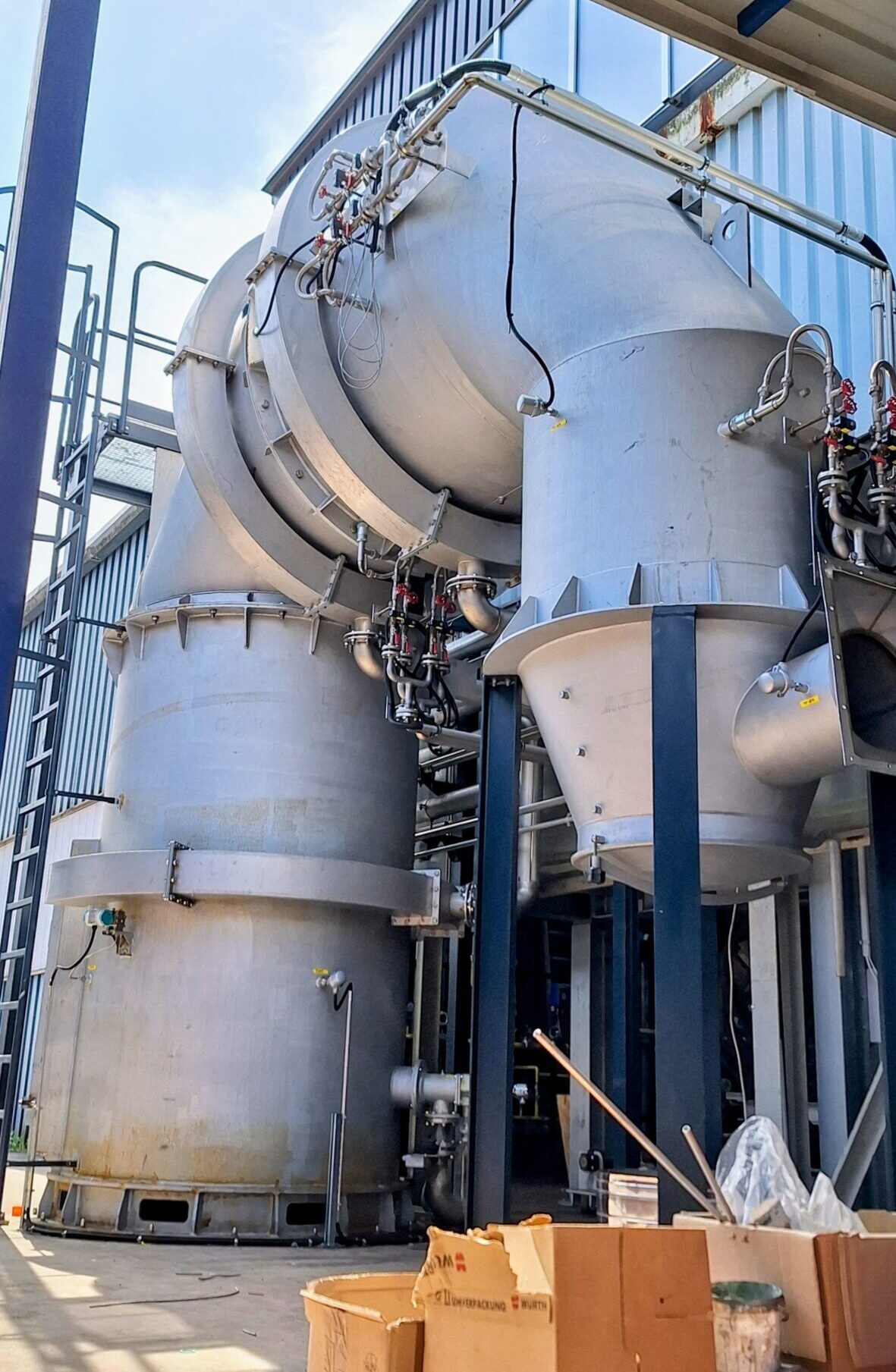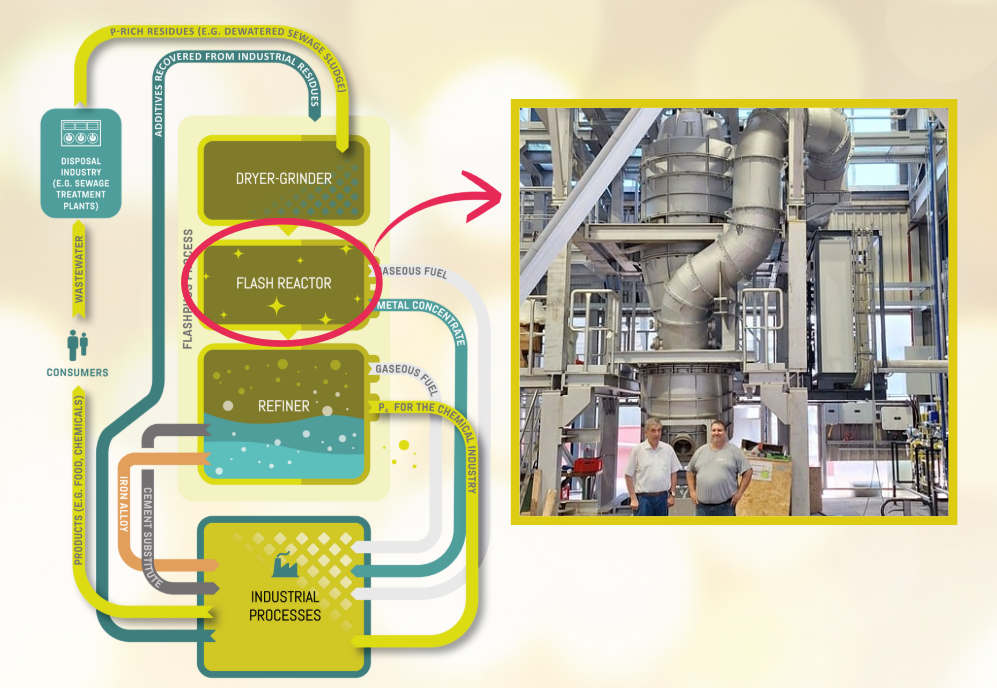In this article, we present the FlashReactor section of the FlashPhos pilot plant as a whole. We provide insights into its layout, key components, and technical setup, and explain how the individual units interact to turn sewage sludge into valuable raw materials. This closer look highlights how the process is transferred from concept to practice and what makes the pilot facility a crucial step towards large-scale implementation.
We are pleased to announce that construction of the second part of our newly developed pilot plant for thermal sewage sludge treatment has been successfully completed. The final preparations are underway – the commissioning phase has officially begun.
The plant is based on an innovative entrained flow reactor, equipped with a newly developed burner and a pneumatic feeding system for efficient gasification of dried and grinded sewage sludge (see blog about the first FlashPhos pilot plant: Dryer-Grinder). This pilot facility marks an important technological milestone toward sustainable phosphorus recovery and climate-friendly wastewater management.
Technical Highlights of the Pilot Plant located at Leoben
At the heart of the plant is the entrained flow reactor Flash Reactor, where sewage sludge is thermochemically converted under high temperatures and intense turbulence. The pneumatic feeding system ensures uniform fuel input.
During the reaction, the organic components of the sewage sludge are converted into a combustible product gas, while the inorganic residues – primarily sewage sludge ash – are slagged within the reactor. The resulting slag is collected in a phase separator located beneath the combustion chamber and is frequently tapped, ensuring stable operation and continuous ash removal.

Picture: Newly erected Flash Reactor with main combustion chamber (upper section) and phase separator (lower section – behind our project partners Alfred Edlinger from MITechnology and Armin Goriup from GFG)
Post-Combustion and Gas Cleaning
The product gas generated in the reactor is routed to a downstream post-combustion chamber, where it is fully oxidized. This ensures that no harmful or toxic substances remain in the exhaust stream.

Picture: Erected Post-combustion chamber and Quenching section for the product gas treatment downstream the novel Flash Reactor
The exhaust gas then passes through a gas cleaning system, consisting of a filter and a gas scrubber. This combination effectively removes remaining particulates and gaseous pollutants enabling low-emission operation.
Key Element of the FlashPhos Process for Phosphorus Recovery
The pilot plant represents the second stage of the three-step FlashPhos process, which is designed for the recovery of phosphorus from sewage sludge. In this stage, mineral phosphorus compounds are thermally slagged. In the third process stage, the phosphorus is recovered in a high-purity form and can be reused as a valuable raw material in the chemical industry or other industrial applications – a key contribution to circular economy and resource conservation.
Next Steps
With the commissioning phase now underway, we are beginning the step-by-step testing of all subsystems, including initial hot operation trials and optimization of process parameters. In parallel, extensive measurements will be carried out to document reactor performance and quality of the products.
We would like to thank all project partners, engineers, suppliers and assembly teams who made the successful construction of this plant possible. We look forward to the upcoming weeks, during which we will transition the technology into real operation and gather valuable data for further development.

